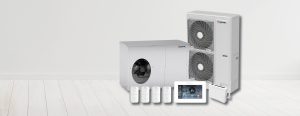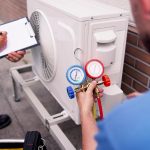5 things to know about evaporative cooling
- Europe
- Residential
- Cooling
There’s never been a better time to invest in evaporative cooling.
Energy prices are escalating and Summers are typically experiencing heat waves. An evaporative cooler offers a significant and increasing edge on traditional reverse cycle air conditioning. In particular, when it comes to energy efficiency and Indoor Air Quality. Below are 5 things that you may not know about evaporative coolers:
1. The air is 100% fresh air.
In an evaporative cooler, the evaporative process relies on airflow. With cool air entering through ducts and then exiting via open doors or windows. Only 100% fresh air is circulating, rather than stale and recycled air. That’s why an evaporative cooler is normally healthier than a standard reverse cycle A/C unit.
2. Evaporative coolers are good for the environment.
Evaporative cooling systems contain no harmful synthetic refrigerants and use water for cooling. In addition , an evaporative cooler’s electricity usage is very low. This means less energy demand, which is better for the environment.
3. Germs and production fumes are expelled out of the building.
One of the great advantages of an evaporative cooler is that doors and windows can be left open. Fresh air is introduced by the evaporative cooler and stale air pushed out from openings. This is the reason why an evaporative cooler can cool semi-open spaces as well.
4. Evaporative coolers use a small amount of water.
In many instances using almost 98% less water than a shower over a year. A Breezair evaporative air conditioner for example, uses around 15 litres of water a day averaged over a year. This is far less than a front loading washing machine which uses around 60 litres of water for one wash. Or a top loading washing machine that uses on average 150 litres of water for one wash. ****
5. Easy maintenance helps to keep costs down.
Easy and regular services by a qualified technician from time to time, will ensure your evaporative cooler continues to run at its peak efficiency and maintains low running costs.
There are more facts about Evaporative cooling that you can learn about here. Or follow us on LinkedIn.
Have a look at our HVAC Case Studies if you wish to know how Evaporative coolers are installed.




